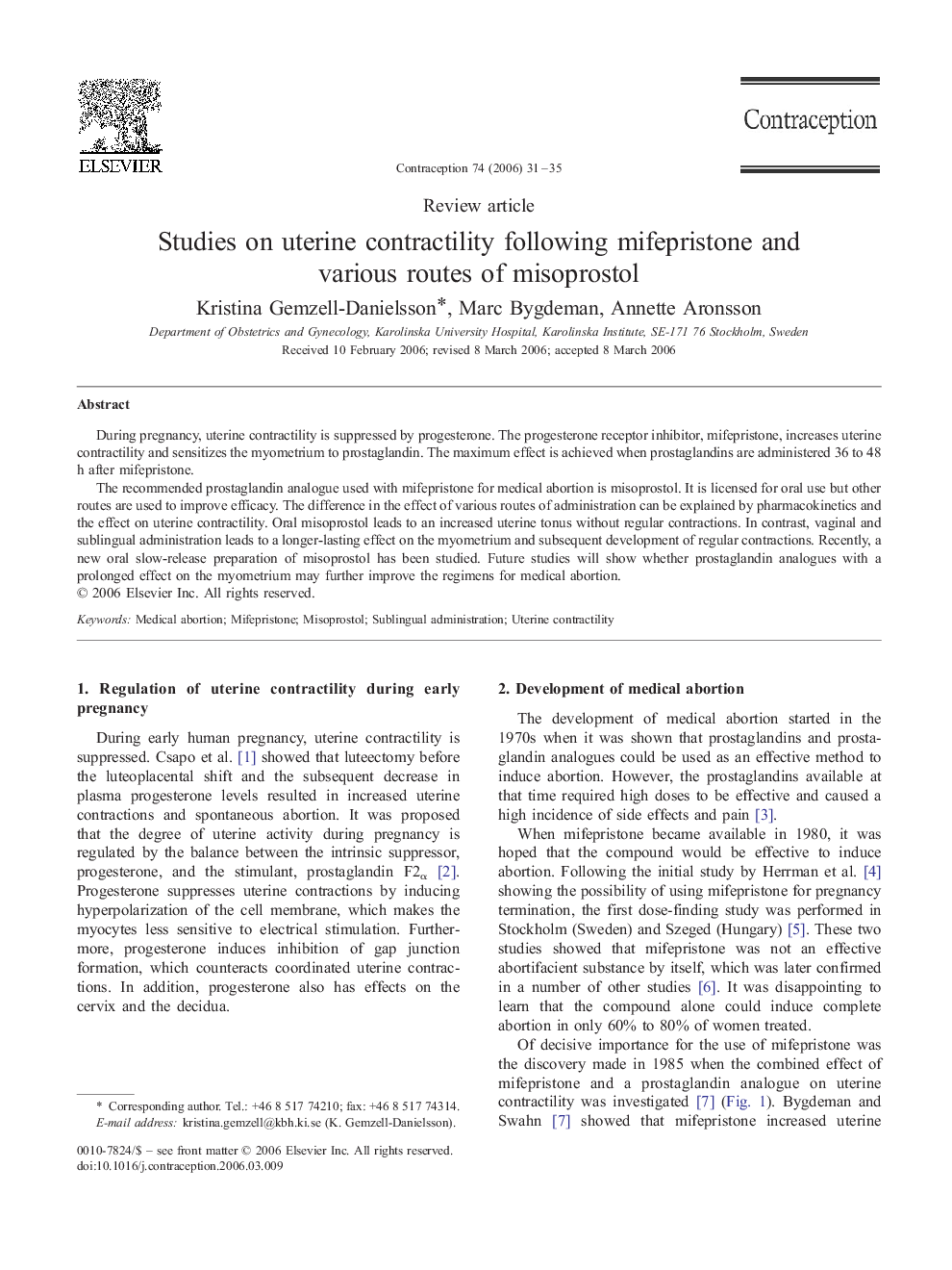| Article ID | Journal | Published Year | Pages | File Type |
|---|---|---|---|---|
| 3915681 | Contraception | 2006 | 5 Pages |
During pregnancy, uterine contractility is suppressed by progesterone. The progesterone receptor inhibitor, mifepristone, increases uterine contractility and sensitizes the myometrium to prostaglandin. The maximum effect is achieved when prostaglandins are administered 36 to 48 h after mifepristone.The recommended prostaglandin analogue used with mifepristone for medical abortion is misoprostol. It is licensed for oral use but other routes are used to improve efficacy. The difference in the effect of various routes of administration can be explained by pharmacokinetics and the effect on uterine contractility. Oral misoprostol leads to an increased uterine tonus without regular contractions. In contrast, vaginal and sublingual administration leads to a longer-lasting effect on the myometrium and subsequent development of regular contractions. Recently, a new oral slow-release preparation of misoprostol has been studied. Future studies will show whether prostaglandin analogues with a prolonged effect on the myometrium may further improve the regimens for medical abortion.
